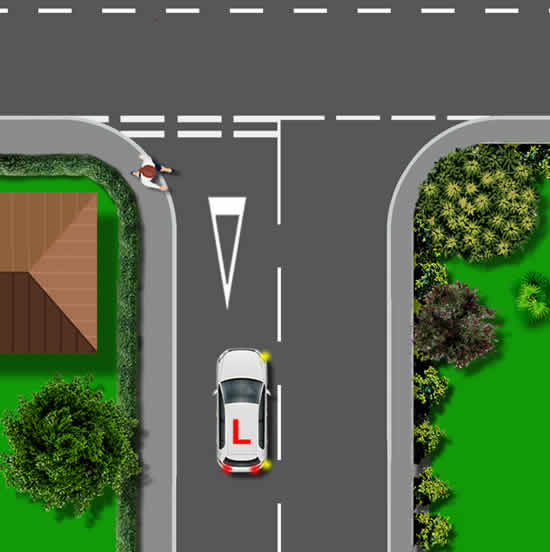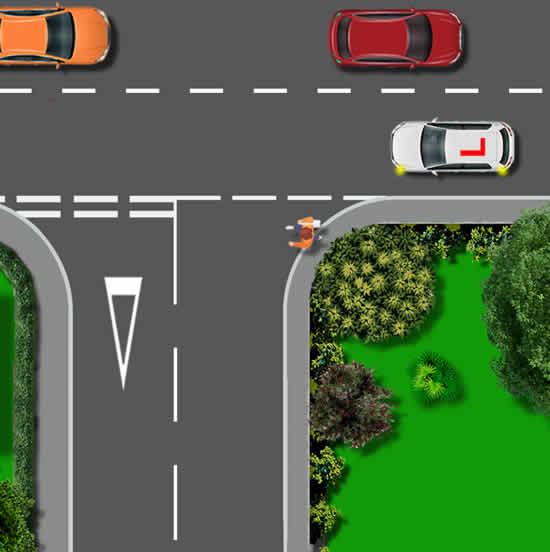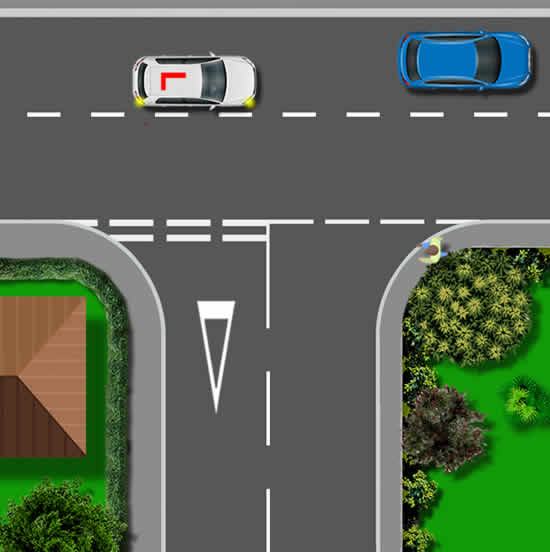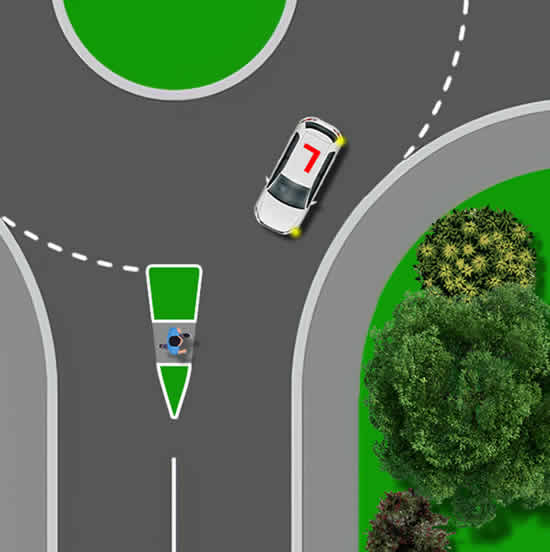The Highway Code has been updated giving pedestrians greater priority at junctions. From 29 January 2022, rule ‘H2’ has been implemented to help protect vulnerable road users and as such, a hierarchy of road users has been created with pedestrians being at the top for the most at risk. The Highway Code states:
The Highway Code states:
At a junction you should give way to pedestrians crossing or waiting to cross a road into which or from which you are turning.
Before the new rules, you must give way to a pedestrian crossing road, or be prepared to give way in case they cross without first checking whether it’s safe to do so.
With the update of the H2 rule, it’ll now be down to the road user to give way to any pedestrians wishing to cross at a junction, regardless or whether they are crossing or waiting.
When Drivers Should Give Way to Pedestrians at Junctions
Let’s take a look at some examples of when drivers and other road users should give way to pedestrians at junctions.

When approaching a T-junction, you should give way to a pedestrian that crossing or waiting to cross the road.

If you’re making a left turn and see a pedestrian crossing or waiting to cross at the junction, give way to them. Before moving off, check your left mirror for any cyclists that may be passing on your left.

Additionally, if you’re making a right turn and see a pedestrian crossing or waiting to cross at the junction, you should give way to them. If possible, wait on your side of the road to avoid blocking traffic on the other carriageway.

Roundabouts are also junctions and where possible, you should give way to pedestrians crossing or waiting to cross the road. At roundabouts, pedestrian routes vary from pedestrian crossings, waiting areas in the centre of the road, to no crossing facilities at all.
Dangers Associated with Giving Way to Pedestrians
With the update to the Highway Code, many are concerned that this new rule may result in an increase of rear-end collisions. However, if you’re observant, travelling at an appropriate speed for the conditions and by slowing down gently and early, the likelihood of a collision will be significantly reduced.
The Highway Code does state that you should give way to pedestrians waiting to cross, rather than must give way. In other words, drivers will have to make their own judgements on what to do based on the actions of the pedestrian and the traffic conditions around them.
Observing the Pedestrian
For example, you intend on making a left or right turn up ahead and you notice a pedestrian approaching the junction. Some pedestrians cross the road (at a junction) without first checking whether or not it’s safe for them to do so. Observe the pedestrian’s actions. Is the pedestrian’s attention elsewhere? For example are they looking at a mobile phone? As they get closer to the junction, do they begin to look around in preparation to cross?
Consider Whether it’s Hazardous to Stop
The priority is to always give way to a pedestrian if they’re crossing. But if they’re waiting, you then need to consider whether it’s safe or if it is too hazardous to stop and give way due to the risk of rear-end collision. For example if you’re travelling on a fast moving A road and intend on turning off, would it be hazardous to stop to let a waiting pedestrian cross? Another situation is if a vehicle if following you very closely, where stopping to give way may prove hazardous.
As previously mentioned, effective observations along with slowing down early and gradually should prevent a potential hazardous situation from occurring. But in real-world driving, we can’t always see or predict what’s about to happen. As such, whether or not you give way to a waiting pedestrian should be considered based on specific circumstances at that time.
Gesturing Pedestrians
Where possible, avoid gesturing to pedestrians to cross as this may result in them reacting to your gesture before checking whether or not it’s safe to cross. Gesturing can include flashing your headlights or making a hand gesture.